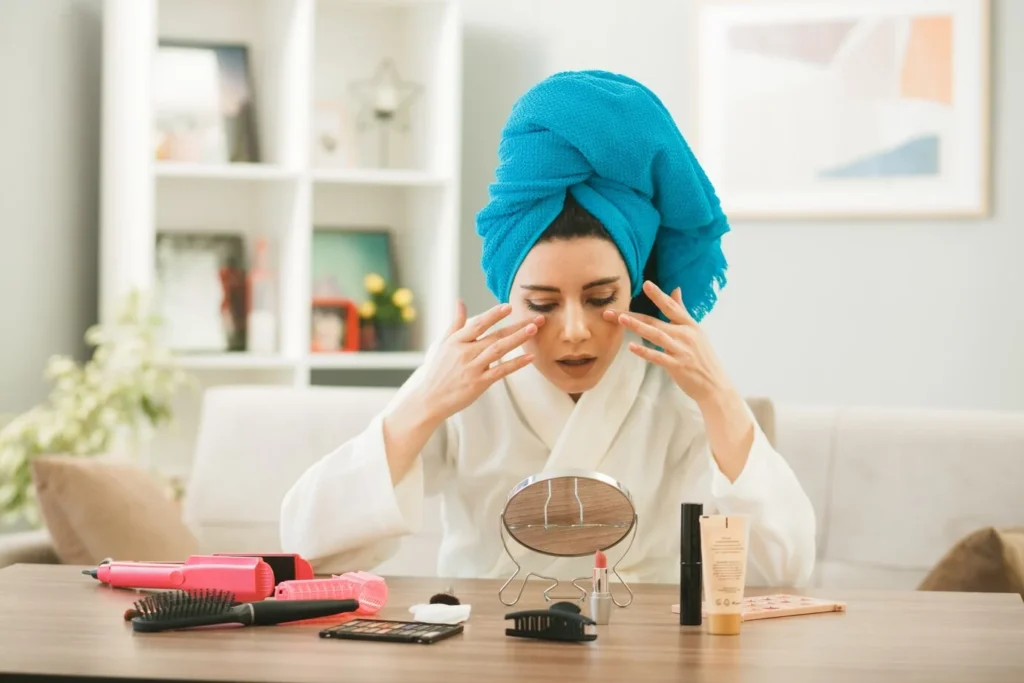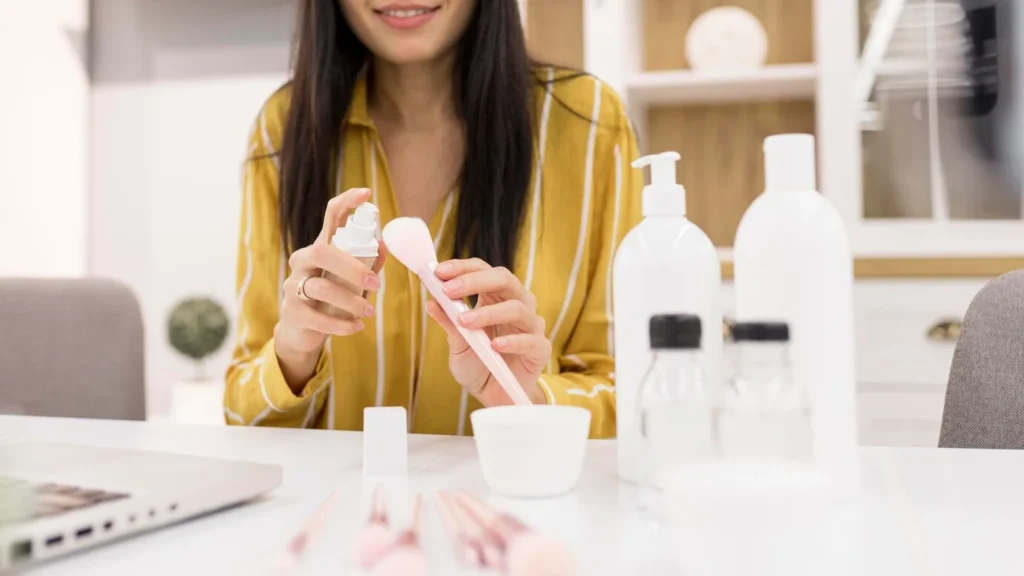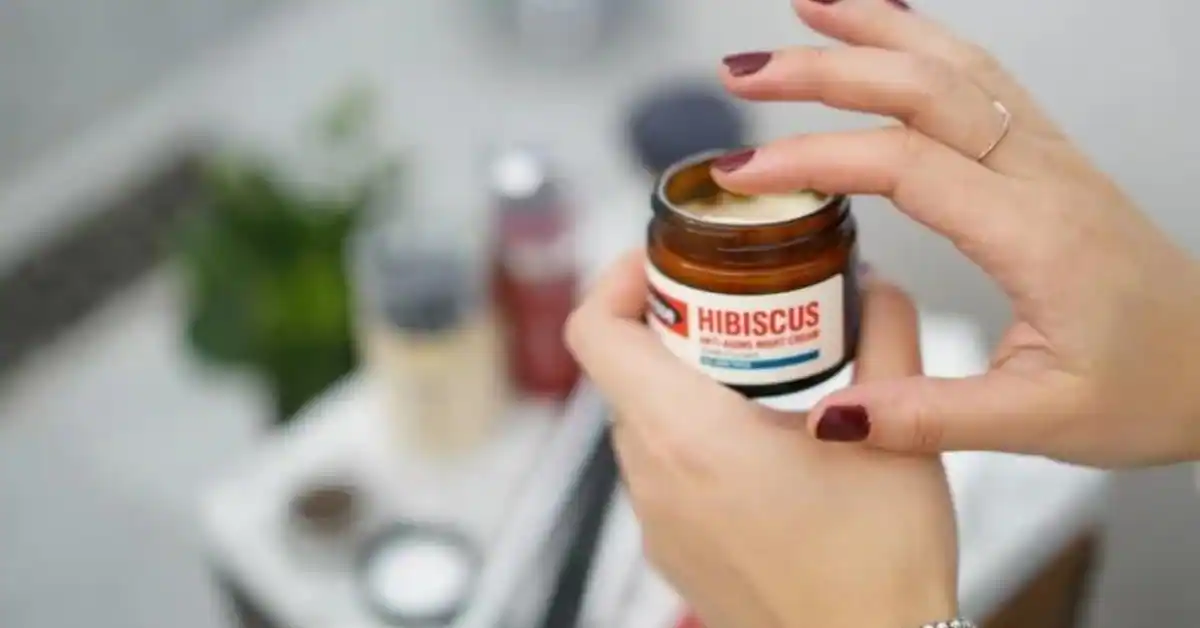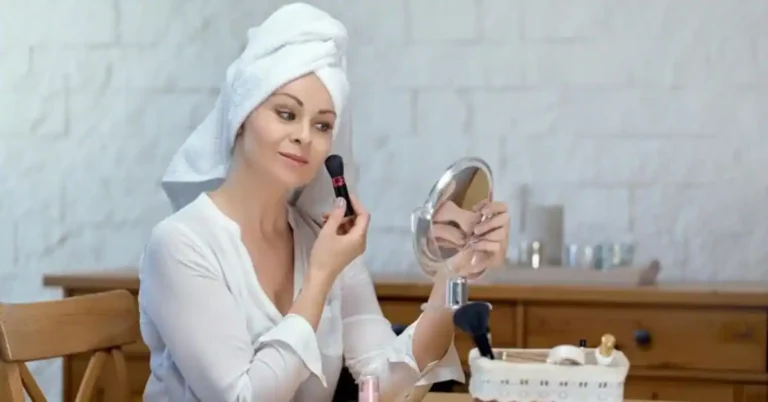How to Detox Your Beauty Routine
In today’s fast-paced world, prioritizing self-care has become more crucial than ever. With the influx of beauty products flooding the market, it’s easy to overlook the potential harm lurking in your skincare routine. From harsh chemicals to environmental pollutants, your skin faces numerous threats daily. Therefore, detoxing your beauty routine is not just a trend but a necessity for maintaining healthy, radiant skin.
Understanding the Need for Detox
In today’s bustling world, where skincare routines are as complex as ever, the concept of “detoxifying” might sound like another trendy buzzword. However, the need to detox your beauty routine goes beyond just following the latest fad—it’s about prioritizing your skin’s health and well-being.
Exposure to Harmful Ingredients
Every day, our skin comes into contact with a myriad of chemicals and pollutants, many of which are present in the skincare products we use. From preservatives like parabens to harsh detergents like sulfates, these ingredients can wreak havoc on our skin over time. They may cause irritation, inflammation, or even disrupt the skin’s natural barrier function, leading to more significant issues down the line.
Cumulative Effects
One of the most critical aspects to understand about skincare products is that their effects are cumulative. It’s not just about what you apply to your skin once in a while, but the consistent use of these products day in and day out. Over time, the accumulation of harmful ingredients can take a toll on your skin’s health, resulting in a range of concerns from premature aging to chronic conditions like eczema or acne.
Environmental Factors
Beyond the products we apply directly to our skin, environmental factors also play a significant role in skin health. Pollution, UV radiation, and other environmental stressors can accelerate aging and damage the skin’s protective barrier. When combined with the use of skincare products containing harmful ingredients, the effects can be even more pronounced.
The Importance of Clean Beauty
In recent years, there has been a growing awareness of the importance of “clean beauty” – products formulated without potentially harmful ingredients. Clean beauty emphasizes the use of natural, non-toxic ingredients that are not only safe for your skin but also for the environment. By opting for clean beauty products, you reduce your exposure to harmful chemicals and support a more sustainable approach to skincare.
Overall Well-being
Our skin is not just a superficial layer; it’s a vital organ that plays a crucial role in our overall health and well-being. When our skin is healthy, it serves as a barrier against infection, regulates body temperature, and helps to eliminate toxins from the body. By detoxifying your beauty routine and choosing products that support skin health, you’re not just improving your appearance but also supporting your body’s natural detoxification processes.
Steps to Detox Your Beauty Routine
Detoxifying your beauty routine is a transformative process that involves replacing conventional skincare products laden with chemicals with cleaner, more natural alternatives. By following these simple steps, you can embark on a journey towards healthier, more radiant skin:

Assess Your Current Products
Assessing your current skincare products is the crucial first step in detoxifying your beauty routine. Here’s how you can effectively evaluate what you’re currently using:
- Gather Your Products: Collect all the skincare products you currently use, including cleansers, moisturizers, serums, masks, and any other items in your routine.
- Read the Ingredient Labels: Take a close look at the ingredient lists of each product. Look out for common harmful ingredients such as:
- Parabens: These synthetic preservatives can disrupt hormone function and have been linked to breast cancer.
- Sulfates (Sodium Lauryl Sulfate/Sodium Laureth Sulfate): These harsh detergents can strip the skin of its natural oils and cause irritation.
- Phthalates: These chemicals are often found in fragrances and can disrupt the endocrine system.
- Formaldehyde: A known carcinogen often used as a preservative in skincare products.
- Synthetic Fragrances: These can contain hundreds of undisclosed chemicals, some of which may be harmful or allergenic.
- Identify Problematic Ingredients: Make note of any products that contain these harmful ingredients. Pay attention to the concentration of these ingredients in each product and how frequently you use them.
- Consider Skin Sensitivities: Take into account any known sensitivities or allergies you may have to certain ingredients. If you experience redness, irritation, or other adverse reactions after using a particular product, it may contain ingredients that are not suitable for your skin.
- Evaluate Product Efficacy: Assess whether your current skincare products are delivering the desired results. Are they effectively addressing your skin concerns, such as dryness, acne, or signs of aging? If not, it may be time to explore alternative products that better suit your needs.
- Check Expiry Dates: Check the expiry dates of your skincare products. Expired products may not only be less effective but could also harbor bacteria and other contaminants that can be harmful to your skin.
- Consider Packaging: Take note of the packaging of your skincare products. Products housed in jars or clear containers are more prone to contamination from air and light, which can degrade their effectiveness over time.
- Assess Overall Usage: Finally, consider how essential each product is to your skincare routine. Are there any products that you rarely use or could do without? Streamlining your routine can help minimize your exposure to potentially harmful ingredients.
Educate Yourself
Educating yourself about skincare ingredients and trends is essential for making informed decisions about your beauty routine. Here’s how you can effectively educate yourself:
- Research Ingredient Lists: Take the time to research common skincare ingredients and their potential effects on the skin. Websites, blogs, and reputable skincare resources often provide detailed information about the purpose and safety of various ingredients.
- Understand Labeling: Learn how to read skincare product labels. Ingredients are typically listed in descending order of concentration, meaning those at the top of the list are present in higher amounts. Look out for terms like “fragrance-free,” “hypoallergenic,” and “non-comedogenic” to guide your product selections.
- Stay Updated on Trends: Keep up with the latest trends and developments in the skincare industry. Follow beauty influencers, dermatologists, and skincare experts on social media platforms like Instagram and YouTube for insights into new products, techniques, and research findings.
- Seek Reliable Sources: Be discerning about the sources of information you rely on for skincare advice. Look for evidence-based information from reputable sources such as dermatologists, skincare experts, and scientific journals. Avoid misinformation and pseudoscience that may be prevalent on some platforms.
- Join Skincare Communities: Engage with online skincare communities and forums where members share experiences, recommendations, and insights. Platforms like Reddit’s r/SkincareAddiction and r/AsianBeauty are popular destinations for skincare enthusiasts to exchange knowledge and support.
- Attend Workshops and Events: Take advantage of skincare workshops, seminars, and events in your area. These can provide opportunities to learn from industry professionals, ask questions, and try out new products.
- Consult Professionals: Consider scheduling consultations with dermatologists or skincare specialists for personalized advice. They can assess your skin type, address specific concerns, and recommend suitable products and treatments based on your individual needs.
- Read Reviews and Testimonials: Look for reviews and testimonials from real users to gain insights into the effectiveness and compatibility of skincare products. Keep in mind that individual experiences may vary, so it’s essential to consider multiple perspectives.
Research Clean Beauty Brands
Researching clean beauty brands is an important step in transitioning to a more natural and sustainable skincare routine. Here’s how you can effectively research and identify clean beauty brands:

- Understand Clean Beauty Standards: Familiarize yourself with the criteria used to define clean beauty products. While there is no universally accepted definition, clean beauty typically refers to products that are formulated without potentially harmful ingredients such as parabens, sulfates, phthalates, formaldehyde, and synthetic fragrances.
- Look for Certifications: Seek out clean beauty brands that have obtained certifications from reputable organizations. Certifications such as “USDA Organic,” “COSMOS Organic,” and “EWG Verified” indicate that products meet stringent standards for ingredient safety and environmental sustainability.
- Research Brand Values: Investigate the mission, values, and commitments of clean beauty brands. Look for brands that prioritize transparency, sustainability, ethical sourcing, and cruelty-free practices. Visit their websites and read about their ingredient sourcing, manufacturing processes, and social responsibility initiatives.
- Read Ingredient Lists: Examine the ingredient lists of products from clean beauty brands to ensure they align with your preferences and values. Look for natural, plant-based ingredients, botanical extracts, essential oils, and certified organic ingredients. Avoid products that contain potentially harmful or controversial chemicals.
- Check Product Reviews: Seek out reviews and testimonials from real users to gauge the efficacy and performance of clean beauty products. Websites, forums, and social media platforms are valuable sources of honest feedback and experiences shared by fellow consumers.
- Consult Clean Beauty Guides: Utilize online resources and guides dedicated to clean beauty to discover new brands and products. Websites like EWG’s Skin Deep database, Think Dirty app, and Clean at Sephora section curate clean beauty recommendations and provide ingredient safety ratings for products.
- Explore Retailers: Visit retailers and online marketplaces that specialize in clean beauty products. Stores like Credo Beauty, The Detox Market, and Follain curate a selection of clean, non-toxic skincare, makeup, and personal care items from various brands, making it easier to discover and shop for clean beauty products.
- Engage with Brand Communities: Follow clean beauty brands on social media platforms to stay updated on product launches, promotions, and educational content. Engage with brand communities by participating in Q&A sessions, live chats, and virtual events to learn more about their ethos and product offerings.
- Consider Sustainability Practices: Evaluate the sustainability practices of clean beauty brands, including their packaging materials, recyclability, and eco-friendly initiatives. Look for brands that prioritize reducing waste, using renewable energy sources, and minimizing their environmental footprint.
- Seek Recommendations: Don’t hesitate to ask friends, family members, or skincare professionals for recommendations of clean beauty brands they trust and love. Personal referrals can provide valuable insights and help you discover hidden gems within the clean beauty market.
Simplify Your Routine
Simplifying your skincare routine is not only beneficial for your skin but also for your overall well-being. Here are some steps to streamline your routine effectively:
- Assess Your Needs: Determine your skin type, concerns, and goals. Are you dealing with acne, dryness, aging, or sensitivity? Understanding your skin’s specific needs will help you tailor your routine accordingly.
- Identify Essential Steps: Simplify your routine by focusing on the essential steps that provide the most benefit to your skin. These typically include cleansing, moisturizing, and protecting with sunscreen. These steps form the foundation of a healthy skincare regimen and can address a wide range of concerns.
- Choose Multi-Tasking Products: Look for multi-tasking products that offer multiple benefits in one formulation. For example, opt for a moisturizer that also contains SPF to streamline your routine and save time. Similarly, consider using a cleanser that doubles as a makeup remover to simplify your cleansing process.
- Prioritize Active Ingredients: Instead of using multiple products with similar ingredients, prioritize skincare products that contain potent active ingredients targeted towards your specific concerns. For example, if you’re addressing fine lines and wrinkles, opt for a serum or moisturizer containing retinol or hyaluronic acid.
- Avoid Unnecessary Steps: Eliminate unnecessary steps and products from your routine that may be redundant or not providing significant benefits to your skin. For instance, if you find that toners or exfoliants aren’t essential for your skin, consider skipping them altogether to simplify your routine.
- Listen to Your Skin: Pay attention to how your skin responds to different products and treatments. If a particular product or step seems to be causing irritation or breakouts, consider eliminating it from your routine to simplify and improve the overall health of your skin.
- Opt for Gentle Formulations: Choose gentle, non-irritating formulations that are suitable for daily use, especially if you have sensitive or reactive skin. Look for products labeled as “gentle,” “mild,” or “for sensitive skin” to minimize the risk of irritation or adverse reactions.
- Keep It Consistent: Establish a consistent skincare routine and stick to it. Consistency is key to achieving optimal results and maintaining the health and balance of your skin over time. Set a morning and evening skincare routine that you can easily follow every day.
- Consider Seasonal Adjustments: Make seasonal adjustments to your skincare routine based on changes in weather, humidity levels, and environmental factors. For example, you may need to switch to a lighter moisturizer during the summer months or incorporate additional hydration during the winter.
- Trust Your Instincts: Ultimately, trust your instincts and intuition when it comes to simplifying your skincare routine. Experiment with different products and techniques to find what works best for you and your skin’s unique needs. Remember that simplicity often leads to better results and a healthier complexion in the long run.
Stay Consistent
Staying consistent with your skincare routine is paramount for achieving the best results and maintaining the health and appearance of your skin over time. Here’s why consistency matters and how you can stay on track:
Why Consistency Matters
- Maximizes Effectiveness: Skincare products often require consistent use over time to deliver noticeable results. Whether you’re targeting acne, fine lines, or hyperpigmentation, regular application of products is essential for maximizing their effectiveness.
- Builds Routine Habits: Consistency helps build habits, making your skincare routine a natural and ingrained part of your daily life. By establishing a consistent routine, you’re more likely to stick to it in the long term, leading to better outcomes for your skin.
- Promotes Skin Health: Regular use of skincare products helps maintain the health and balance of your skin. Cleansing, moisturizing, and protecting with sunscreen daily can help prevent breakouts, hydrate the skin, and protect against environmental damage.
- Addresses Skin Concerns: Many skincare concerns, such as acne or hyperpigmentation, require ongoing treatment and maintenance. Consistently using targeted products can address these concerns and prevent them from worsening over time.
- Prevents Regression: Skincare is often cumulative, meaning that progress can be lost if you stop using products or skip steps in your routine. Consistency prevents regression and ensures that you continue to see improvements in your skin’s condition.
Tips for Staying Consistent
- Establish a Routine: Set a consistent morning and evening skincare routine that you can follow every day. Choose specific times, such as after brushing your teeth or before going to bed, to integrate skincare seamlessly into your daily schedule.
- Keep Products Visible: Store your skincare products in a visible and accessible location to serve as a visual reminder to use them daily. Consider keeping them on your bathroom counter or vanity for easy access.
- Use Reminders: Set reminders on your phone or calendar to prompt you to complete your skincare routine at the same times each day. This can help reinforce the habit and ensure you don’t forget to take care of your skin.
- Travel-Friendly Options: Invest in travel-sized or portable versions of your favorite skincare products to maintain consistency even when you’re on the go. Having products readily available while traveling makes it easier to stick to your routine.
- Track Your Progress: Keep track of your skincare progress by taking photos of your skin regularly. This visual documentation can help motivate you to stay consistent with your routine and track improvements over time.






